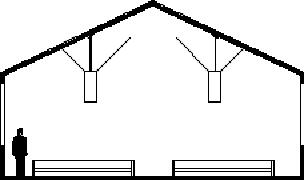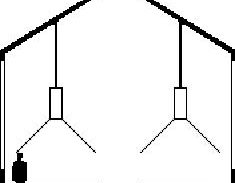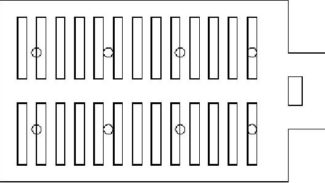Lighting design is a unique combination of art and technology. Church lighting is one of the most important, yet often overlooked, aspects of creating an inviting and comfortable environment within the worship facility. A perfect lighting setup in a church can enhance the natural surroundings and make it easier for members of your church to be read and be engaged with the service.
Generally, over the years worship facilities have become much brighter. Gone are the days of using watts per square ft to calculate light. We now use advanced digital calculation methods with raytrace software. This software simulates light output in a given space and creates a format that averages foot-candles. The technical term for this is called photometry. More traditional houses of worship have between 5-15 foot candles, which is rather dim. More contemporary houses of worship prefer light levels closer to the 20-35 foot candle range, which is a bit brighter.
Download the Church Lighting Guide (PDF).
Some Important Lighting Tips to Create the Perfect Ambiance
- The first step is to choose the desired aesthetic design. After the design is picked you can match a family of fixtures and choose more technical specifications.
- What are your lamping requirements? Lamping refers to the type of light bulbs used to produce light in a luminaire. Energy efficient lamping such as Fluorescent, LED, and HID are commonplace in modern church lighting. Please review our lamping section for more information.
- Examine your varying needs and what might be appropriate for each of them. Examples of this would be evaluating day-and-night events and the average age of your congregation. Generally the older the congregation the brighter you will want the space to be.
- Examine the proper location of each fixture and electrical box to get a uniform level of illumination. Fixtures spaced far apart make it difficult to create even light levels. Identifying the correct fixture spacing is very important.
- Mounting height of each fixture and its relation to the architectural elements can effect light distribution and light levels. It’s important to select the appropriate sizing based on hang height and ceiling height.
- If you have the budget, consider using light lifts to reduce maintenance costs related to cleaning and changing bulbs.
- The lighted surroundings should be suitably bright and aesthetically pleasing. That way, they improve the presentation rather than distract from it.
- If your lighting levels need to be modified during sermons and services, It’s recommended to have an appropriate dimming and control system. Dimming ballasts and controls are often not considered until after the fact causing engineering issues and resulting in projects going over budget.
At McFadden, our Lighting Designers and Engineers use all the sources above, often in combination, to calculate the appropriate specifications for your project. For more information on this process please explore the photometry and energy efficient lamping sections on our site. We are happy to guide you through the process of selecting lighting that suits your churches styling and budget.





